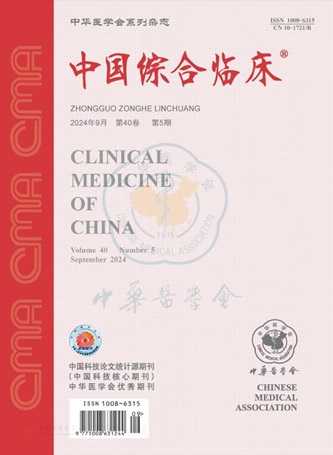不同频率运动疗法对脑卒中患者影响的研究
引用次数: 0
摘要
目的探讨不同频率悬吊运动疗法(SET)对脑卒中患者躯干控制平衡及行走能力的影响。方法2018年1月~ 2018年12月华中科技大学同济医学院协和医院康复医学部收治的脑卒中患者90例,常规接受吊带运动治疗,分为1次/天低频组、2次/天中频组、3次/天高频组,每次20 min/次,共3个月。术后1、2、3个月采用躯干控制测验(TCT)、Berg平衡量表(BBS)、功能行走分级(FAC)和改良Barthel指数(MBI)对三组患者进行评价。结果低、中、高频组TCT、BBS、FAC、MBI差异均有统计学意义(P < 0.05)。低、中、高频组fAC与MBI差异无统计学意义,训练2、3个月后两组间差异无统计学意义。fAC((1.84±0.41)、(2.39±0.44)、(3.29±0.33)与MBI((27.32±9.33)、(34.45±9.21)、(44.77±10.27)、(41.33±11.21)、(52.73±12.31)、(75.94±13.22)之间差异有统计学意义。高频组与低频组比较差异有统计学意义(P< 0.05)。结论一天内多次吊带运动治疗可进一步改善脑卒中患者的躯干控制平衡和行走能力,缩短病程。关键词:卒中;吊带运动疗法;干线控制平衡;行走的能力本文章由计算机程序翻译,如有差异,请以英文原文为准。
Study on the effect of different frequencysling exercise therapyon stroke patients
Objective
To investigate the effects of different frequency sling exercise therapy (SET) on the balance of trunk control and walking ability in stroke patients.
Methods
A total of 90 patients with stroke who were admitted to the Department of Rehabilitation Medicine, Union Hospital of Tongji Medical College, Huazhong University of Science and Technology, from January 2018 to December 2018, received sling exercise therapy on a routine basis and were divided into 1 time/Day low frequency group, 2 time/Day medium frequency group, 3 time/Day high frequency group, 20 min/time, for a total of 3 months.After 1, 2 and 3 months, trunk control test (TCT), Berg balance scale(BBS), functional ambulation classification (FAC) and modified Barthel Index (MBI) were used to evaluate the three groups of patients.
Results
There were significant differences in TCT, BBS, FAC and MBI between the low, middle and high frequency groups (all P 0.05). There was no significant difference between fAC and MBI in the low, medium and high frequency group, but there was no significant difference between the two groups after training for 2 and 3 months There were significant differences between fAC ((1.84±0.41), (2.39±0.44), (3.29 ± 0.33) and MBI ((27.32 ± 9.33), (34.45 ± 9.21), (44.77 ± 10.27) and (41.33±11.21), (52.73±12.31), (75.94±13.22)). There was significant difference between the high frequency group and the low frequency group (P< 0.05).
Conclusion
Multiple sling exercise therapy in one day can further improve the balance of trunk control and walking ability of stroke patients, and shorten the course of disease.
Key words:
Stroke; Sling exercise therapy; Trunk control balance; Walking ability
求助全文
通过发布文献求助,成功后即可免费获取论文全文。
去求助
来源期刊
CiteScore
0.10
自引率
0.00%
发文量
16855
期刊介绍:
Clinical Medicine of China is an academic journal organized by the Chinese Medical Association (CMA), which mainly publishes original research papers, reviews and commentaries in the field.
Clinical Medicine of China is a source journal of Peking University (2000 and 2004 editions), a core journal of Chinese science and technology, an academic journal of RCCSE China Core (Extended Edition), and has been published in Chemical Abstracts of the United States (CA), Abstracts Journal of Russia (AJ), Chinese Core Journals (Selection) Database, Chinese Science and Technology Materials Directory, Wanfang Database, China Academic Journal Database, JST Japan Science and Technology Agency Database (Japanese) (2018) and other databases.

 求助内容:
求助内容: 应助结果提醒方式:
应助结果提醒方式:


